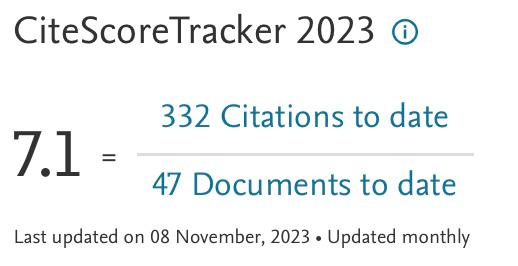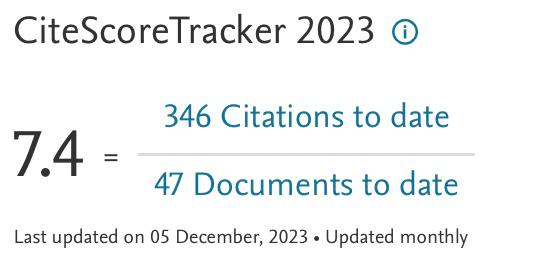Coal Dust Severity in a Power Plant: In-Situ, Analytical, and Numerical Assessments
DOI:
https://doi.org/10.37934/arnht.14.1.1728Keywords:
Coal Dust, Power Plant, Fire Risk, Computational Fluid Dynamics (CFD)Abstract
One of the most serious occupational hazards in the coal industry is coal dust. Previous research revealed that the vast majority of coal dust assessments were conducted in coal mines, resulting in a lack of understanding of the severity of coal dust during coal handling activities in power plants. Therefore, the severity of combustible coal dust in one of Malaysia's power plants was assessed using a comprehensive analysis that included qualitative observations, in-situ measurements, numerical simulations, laboratory tests, and data analysis. The designated locations include the coal conveyor hall (Zone 1, 2A, and 2B), milling (Zone 3), and bunkering areas (Zone 4). Relevant safety limits, as recommended in National Fire Protection Association (NFPA) 654, were used as guidelines where comparisons with the site data were made. The high coal dust accumulation rate in Zone 1 was revealed to be largely the result of inefficient ventilation performance, as confirmed by in-situ measurement and numerical simulation. Direct referencing to the relevant NFPA 654 guidelines finds the zones encompassing the coal conveyor hall are at “high risk” of fire and explosion. Further laboratory assessments on the dust samples in Zone 1 however reduces the earlier assessment to “medium risk” with the potential of “low risk” with regular housekeeping. Zones 3 and 4 were found to be “low risk” areas due to insignificant accumulation and good air flow management. Overall, the evaluation of the severity of combustible coal dust was successful in establishing the risk mapping for all zones. Cleaning frequencies were also proposed based on the coal dust accumulation rates and the risk mapping.
Downloads
References
Coronado-Posada, Nadia, Maria Cabarcas-Montalvo, and Jesus Olivero-Verbel. "Phytotoxicity assessment of a methanolic coal dust extract in Lemna minor." Ecotoxicology and environmental safety 95 (2013): 27-32. https://doi.org/10.1016/j.ecoenv.2013.05.001
Qamar, Rizwan Ahmed, Asim Mushtaq, Ahmed Ullah, and Zaeem Uddin Ali. "Designing of Underground Coal Gasification Unit." Journal of Advanced Research in Fluid Mechanics and Thermal Sciences 71, no. 2 (2020): 103-133. https://doi.org/10.37934/arfmts.71.2.103133
Rahman, Mohammad Nurizat, and Nor Fadzilah Binti Othman. "A numerical model for ash deposition based on actual operating conditions of a 700 MW coal-fired power plant: Validation feedback loop via structural similarity indexes (SSIMs)." CFD Letters 14, no. 1 (2022): 99-111. https://doi.org/10.37934/cfdl.14.1.99111
Tong, Ruipeng, Mengzhao Cheng, Xiaoyi Yang, Yunyun Yang, and Meng Shi. "Exposure levels and health damage assessment of dust in a coal mine of Shanxi Province, China." Process Safety and Environmental Protection 128 (2019): 184-192. https://doi.org/10.1016/j.psep.2019.05.022
Thabari, Jeri At, Syailendra Supit, Wahyu Nirbito, Yuswan Muharam, and Yulianto Sulistyo Nugroho. "Modeling on the effect of heat exchanger submersion on controlling spontaneous combustion in a coal pile." Journal of Advanced Research in Fluid Mechanics and Thermal Sciences 81, no. 1 (2021): 158-164. https://doi.org/10.37934/arfmts.81.1.158164
Rahman, Mohammad Nurizat. "Optimisation of Solid Fuel In-furnace Blending for an Opposed-firing Utility Boiler: A Numerical Analysis." CFD Letters 14, no. 9 (2022): 89-107. https://doi.org/10.37934/cfdl.14.9.89107
Cesari, D., E. Merico, F. M. Grasso, A. Dinoi, M. Conte, A. Genga, M. Siciliano, E. Petralia, M. Stracquadanio, and D. Contini. "Analysis of the contribution to PM10 concentrations of the largest coal-fired power plant of Italy in four different sites." Atmospheric Pollution Research 12, no. 8 (2021): 101135. https://doi.org/10.1016/j.apr.2021.101135
Rahman, Mohammad Nurizat, Suzana Yusup, Bridgid Chin Lai Fui, Ismail Shariff, and Armando T. Quitain. "Oil Palm Wastes Co-firing in an Opposed Firing 500 MW Utility Boiler: A Numerical Analysis." CFD Letters 15, no. 3 (2023): 139-152. https://doi.org/10.37934/cfdl.15.3.139152
Chaulya, S. K., A. K. Singh, T. B. Singh, G. C. Mondal, S. Singh, S. K. Singh, and R. S. Singh. "Modelling for air quality estimation for a planned coal washery to control air pollution." Environmental Modeling & Assessment 25 (2020): 775-791. https://doi.org/10.1007/s10666-020-09721-x
Rout, Tofan Kumar, R. E. Masto, L. C. Ram, Joshy George, and Pratap Kumar Padhy. "Assessment of human health risks from heavy metals in outdoor dust samples in a coal mining area." Environmental geochemistry and health 35 (2013): 347-356. https://doi.org/10.1007/s10653-012-9499-2
Ishtiaq, Muhammad, Noor Jehan, Said Akbar Khan, Said Muhammad, Umar Saddique, Bushra Iftikhar, and Zahidullah. "Potential harmful elements in coal dust and human health risk assessment near the mining areas in Cherat, Pakistan." Environmental science and pollution research 25 (2018): 14666-14673. https://doi.org/10.1007/s11356-018-1655-5
Liu, Shang-Hao, Yang-Fan Cheng, Xiang-Rui Meng, Hong-Hao Ma, Shi-Xiang Song, Wen-Jin Liu, and Zhao-Wu Shen. "Influence of particle size polydispersity on coal dust explosibility." Journal of Loss Prevention in the Process Industries 56 (2018): 444-450. https://doi.org/10.1016/j.jlp.2018.10.005
Smirniakov, Valeriy Vitalievich, and Victoria Vladimirovna Smirniakova. "Comprehensive analysis and assessment of the role of hard-to-handle factors in the reasons of methane and coal dust explosions in mines in Russia." Biosciences Biotechnology Research Asia 12, no. 1 (2015): 56-69. https://doi.org/10.13005/bbra/1636
Li, Bei, Gang Liu, Ming-Shu Bi, Zhen-Bao Li, Bing Han, and Chi-Min Shu. "Self-ignition risk classification for coal dust layers of three coal types on a hot surface." Energy 216 (2021): 119197. https://doi.org/10.1016/j.energy.2020.119197
Kumar, Nikhil, Tetsu Kubota, Yoshihide Tominaga, Mohammadreza Shirzadi, and Ronita Bardhan. "CFD simulations of wind-induced ventilation in apartment buildings with vertical voids: Effects of pilotis and wind fin on ventilation performance." Building and Environment 194 (2021): 107666. https://doi.org/10.1016/j.buildenv.2021.107666
Menter, Florian R. "Two-equation eddy-viscosity turbulence models for engineering applications." AIAA journal 32, no. 8 (1994): 1598-1605. https://doi.org/10.2514/3.12149
Menter, Florian R. "Review of the shear-stress transport turbulence model experience from an industrial perspective." International journal of computational fluid dynamics 23, no. 4 (2009): 305-316. https://doi.org/10.1080/10618560902773387
Rahman, Mohammad Nurizat, Mohd Shiraz Aris, Mohd Haffis Ujir, and Mohd Hariffin Boosroh. "Predictive Numerical Analysis to Optimize Ventilation Performance in a Hydropower Surge Chamber for H2S Removal." CFD Letters 13, no. 10 (2021): 69-80. https://doi.org/10.37934/cfdl.13.10.6980
Rahman, Mohammad Nurizat, Mohd Fairus Mohd Yasin, and Mohd Shiraz Aris. "Reacting flow characteristics and multifuel capabilities of a multi-nozzle dry low NOx combustor: A numerical analysis." CFD Letters 13, no. 11 (2021): 21-34. https://doi.org/10.37934/cfdl.13.11.2134
NFPA, NFPA. "654: Standard for the Prevention of Fire and Dust Explosions from the Manufacturing, Processing, and Handling of Combustible Particulate Solids." Natl Fire Prot Assoc Quincy, MA (2006).
“ISO 23499:2013.” ISO, 2018. https://www.iso.org/standard/63444.html
Satsangi, P. Gursumeeran, Suman Yadav, Atar Singh Pipal, and Navanath Kumbhar. "Characteristics of trace metals in fine (PM2. 5) and inhalable (PM10) particles and its health risk assessment along with in-silico approach in indoor environment of India." Atmospheric Environment 92 (2014): 384-393. https://doi.org/10.1016/j.atmosenv.2014.04.047
Xu, Renliang. Particle characterization: light scattering methods. Vol. 13. Springer Science & Business Media, 2001.
“Standard Test Method for Minimum Autoignition Temperature of Dust Clouds.” E1491. https://www.astm.org/e1491-06r19.html


























